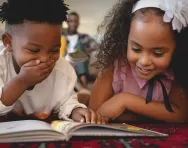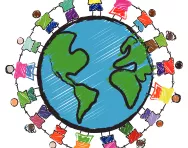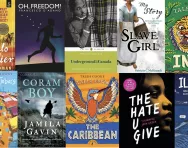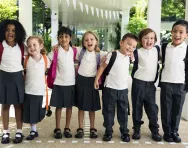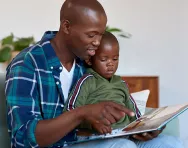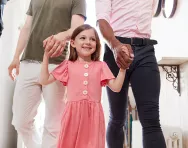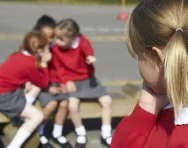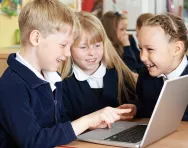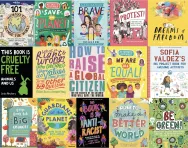Important update from TheSchoolRun
For the past 13 years, TheSchoolRun has been run by a small team of mums working from home, dedicated to providing quality educational resources to primary school parents. Unfortunately, rising supplier costs and falling revenue have made it impossible for us to continue operating, and we’ve had to make the difficult decision to close. The good news: We’ve arranged for another educational provider to take over many of our resources. These will be hosted on a new portal, where the content will be updated and expanded to support your child’s learning.
What this means for subscribers:
- Your subscription is still active, and for now, you can keep using the website as normal — just log in with your usual details to access all our articles and resources*.
- In a few months, all resources will move to the new portal. You’ll continue to have access there until your subscription ends. We’ll send you full details nearer the time.
- As a thank you for your support, we’ll also be sending you 16 primary school eBooks (worth £108.84) to download and keep.
A few changes to be aware of:
- The Learning Journey weekly email has ended, but your child’s plan will still be updated on your dashboard each Monday. Just log in to see the recommended worksheets.
- The 11+ weekly emails have now ended. We sent you all the remaining emails in the series at the end of March — please check your inbox (and spam folder) if you haven’t seen them. You can also follow the full programme here: 11+ Learning Journey.
If you have any questions, please contact us at [email protected]. Thank you for being part of our journey it’s been a privilege to support your family’s learning.
*If you need to reset your password, it will still work as usual. Please check your spam folder if the reset email doesn’t appear in your inbox.
Teaching primary school children about racism
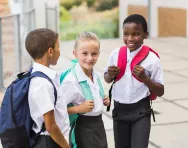
Every child has the right to feel safe and comfortable at school, but for many, the way they’re treated because of their skin colour, religion, culture or heritage can make school life difficult and even threatening.
According to research by the YMCA, a staggering 95% of young Black people have heard racist language at school, and a survey by The Diana Award found that many have been the direct target of racist behaviour by the age of 13.


Start a unique learning programme!
- Weekly programme for each school year
- Worksheets sent direct to your inbox
- Keeps your child's learning on track
‘Cruel words and actions hurt, and if a child is verbally or physically attacked by another child at school, it’s highly likely that it will impact their confidence and sense of self-worth,’ says Lily Pryer, author of childcare platform Yoopies UK’s Guide for Parents to Black Lives Matter.
What is racism?
Racism is the belief that people of some races are inferior to others. As a result or racist attitudes, a person might be badly treated, excluded, disadvantaged, verbally or physically attacked or humiliated because of their race or ethnicity.
The two main types that might affect children are:
Individual/internalised racism: a child inwardly holds negative beliefs or prejudices about people from a different ethnic background. They might know that it’s wrong to express these beliefs, but still feel them internally.
Interpersonal racism: racism that is directed at an individual or individuals. This may be subtle (not inviting a child to join a game because of their skin colour) or overt (using racist language towards another child, or emotionally or physically bullying them).
Racism isn’t just about the colour of someone’s skin. People may have racist attitudes towards, for example, Travellers, Jewish people and asylum seekers. Any negative beliefs about, or behaviours towards, someone of a different ethnicity count as racism.
When do children start to become aware of racial differences?
As parents, we often think that young children don’t notice racial differences between themselves and others, but actually, they become aware of race from a very young age.
‘They might express a preference for certain toys, such as dolls that do or don’t look like them, or for television presenters,’ says Kate Mills, education worker with the charity Show Racism the Red Card.
As they grow a little older, children may become more openly inquisitive about why some people look or sound different from others. ‘This often initially takes the form of questions,’ says Kate. ‘They may notice that children at school or nursery have a different skin colour, accent, religion or cultural practices and want to know why.’
Because we often assume that children are ‘colour blind’ in terms of noticing racial differences, we might shy away from talking about them in the hope of ‘preserving their innocence’ around matters of race, but their natural curiosity means it’s important to answer questions honestly as they arise.
‘One of our team members worked in predominantly white nurseries, and some children would be very curious about her skin colour, asking questions such as whether it was dirt,’ Kate says.
‘From a young age, they take in the world around them and begin to form a worldview, and parents and carers have a huge role to play in shaping it.’
Teaching about race and racism in schools
Some schools (often those with a diverse student population) are very good at teaching children about race and racism; others less so. But the key is not to ignore racial differences by promoting the message that ‘we are all the same’.
‘It’s good to celebrate diversity and what makes us different,’ says Lily. ‘We aren’t all the same, so having an awareness of our diversity and differences encourages pupils to look at the word through different lenses, so they become aware of the amazing wealth of voices that make up humankind.’
There are lots of ways in which primary schools can address racism and celebrate the diversity in their school population and the wider world.
Modelling positive behaviour: teachers should act as role models themselves in their attitudes towards difference (this includes not just racial differences, but also disabilities, sexuality, gender expression, etc). It’s also important to use correct terminology, such as Black rather than coloured, and Chinese rather than oriental.
Attending a range of different events: for example, a class could visit different places of worship like churches, mosques, synagogues, temples etc as part of an RE project on world faiths.
Providing a wide range of books and other resources like websites and TV programmes that feature diverse characters and messages. These shouldn’t all be explicitly about race, but should also feature, for example, ethnically diverse protagonists going about their daily life, or as superheroes, princesses, fairies, and so on. Reading scheme books should also include non-white characters.
Embedding diversity throughout the curriculum: in maths, for example, word problems can easily be written to include different ethnicities, e.g. ‘If Priya has 14 sweets and shares them equally with Li Jie, how many will they each have?’
Exploring topics that explore the role of race and racism through history, like the Atlantic slave trade, apartheid, the Holocaust, and celebrating the achievements of Black people like nurse and campaigner Mary Seacole and US civil rights activists Dr Martin Luther King Jr and Rosa Parks.
Making sure wall displays include children of all colours and ethnicities.
Emphasising that differences make us special, and that is a good thing. Teachers might, for instance, ask ethnic minority children in the class to do individual or group presentations about their celebrations in their culture, like Diwali and Eid, or set a task where pupils have to pair up and think about how they’re different but equally special (not just racially, but also ‘curly hair,’ ‘great footballer,’ ‘wears cool glasses’).
Encouraging children to ask questions and answering them appropriately. These might crop up during the course of lessons, in the playground, or in sharing time like Circle Time. It’s important that teachers are honest if they can’t answer a question: ‘I’m not sure about that, but let’s try to find the answer together.’
Supporting children who don’t speak English as their first language.
Relating racial differences and how children respond to them to school values like kindness, truth, love and courage.
Being open and honest about prejudice and discrimination. This might, for example, involve having discussions about things children have heard about out of school, on TV, online or on social media, like the killing of George Floyd and the Black Lives Matter movement.
Organising events and enrichment activities that raise awareness of diversity, like Black History Month, Holocaust Memorial Day and Anti-Bullying Week, and arranging workshops or assemblies with anti-racism organisations.
Ensuring teachers receive training in tackling racism, for example from Show Racism the Red Card.
Some matters of race and racism might be covered in specific subject areas, like PSHE, history and RE, but a cross-curricular approach where differences are explored and normalised is also important.
‘We should encourage children to actively see colour, culture and history, and acknowledge that race has an important impact on people’s life experiences and worldview,’ says Lily.
Tackling racist behaviour in primary schools
It’s vital that racist behaviour is tackled promptly in schools, whether it’s a one-off racist slur in the playground or prolonged bullying. Every school must have an anti-bullying policy, and ideally an anti-racism policy, and must follow these when they’re responding to racially motivated incidents.
Racist behaviour in pupils includes, but is not limited to:
- Name-calling, including using racist language or stereotypes.
- Spreading rumours or gossip about a child who has been targeted because of their racial or cultural difference.
- Excluding a child from group work, games, conversation etc because of their race.
- Physically aggressive behaviour like pushing, kicking and hitting a child with a perceived ethnic difference.
- Making sounds or gestures to mock or intimidate a child about their race (eg monkey noises).
- Defacing a pupil’s personal property or school property, such as with racist graffiti.
In some cases, a child may not realise that something they have said or done was racist, and a structured conversation with them could enlighten them about why their behaviour was unacceptable.
This might then be addressed on a class level, not singling out the individual child, but, for example, having a discussion about why words can hurt people.
‘Education is the most important weapon we can use to eradicate racism, and through learning and sharing our learning, we can make the UK an inclusive place where everyone can thrive,’ says Kate.
In other cases, a child may deliberately behave in a racist way, and on these occasions, schools must follow the steps set out in their behaviour policies, and, if it escalates to bullying, their anti-bullying policies.
What to do if your child is the target of racist behaviour
Show Racism the Red Card suggests taking these steps if your child is the target of racially motivated behaviour:
- Give them the chance to talk without getting angry or upset yourself.
- Give them ownership of the situation by asking them what they want you to do (for example speaking to their teacher).
- Reassure your child.
- Share some examples of other people who have been the victim of racism, whether that’s a relative, a well-known person like Meghan Markle or Jade from Little Mix, or a historical figure like Nelson Mandela.
- Role-play responses that they could use in future (but be careful that these won’t be seen as retaliatory).
- Keep a bullying diary of every incident and report these to the school.
‘Young people should remember they’re not alone, and that they can and should look to others for support,’ adds Kate. ‘Being the target of racism, whether direct or indirect, is not only emotionally traumatic but also exhausting.’
8 top tips for raising an anti-racist child
Show Racism the Red Card suggests:
- Focus on creating a kind, confident child by praising positive behaviours.
- Expose your child to as many different experiences as you are able.
- Take a stance against racism, but don’t preach (children often switch off if they think a parent is nagging).
- Set high expectations for your child, for example around behaviour and being a good friend.
- If your child has displayed racist behaviour, talk to them to make sure they understand what they said or did was wrong.
- If they have engaged in racist behaviour, give them space to express their thoughts and feelings about the incident, without interrupting.
- Make sure their actions have consequences.
- If the behaviour was intentional, help them get to the root of why they behaved like that. For example, did they lose their temper? Are they being bullied themselves?
‘Children often pick up on other children’s ideas or behaviours that we aren’t always aware of, and these may stick if they can’t openly discuss and process them,’ adds Lily. ‘By listening to what they know, we can build on those conversations and help them fill the more difficult or challenging gaps.’
CBBC's Newsround has an excellent archive of news reports about racism for children, to help facilitate discussions with your child.
For more information, Barnardo's has produced White privilege - a guide for parents and a blog about how systemic racism affects young people in the UK.
EqualiTeach offers excellent tips for talking to children about race equality and racism.
‘My son had no friends at school and no one wanted to play with him’
Emy Thomas and her partner are both black British of African origin, and have three sons, aged 12, seven and four.
My son was born in the UK and was diagnosed with autism at the age of three. He originally attended a lovely school, but when he was nine, we moved house to an area where most schools had an excellent Ofsted rating.
Our new area was predominantly white, and my son was the only black boy in his class. It felt important to talk to him about race, but he has developmental delays and simply couldn’t understand why people should be treated differently because of their skin colour.
The first time I realised that there was a problem was when I organised his 10th birthday party, and asked him who he’d like to invite. My heart sank when he told me that he had no friends at school and no one wanted to play with him.
Gradually, he told me how he was being bullied by the boys in his class, who said that his voice was annoying, wouldn’t let him speak, and blamed him every time something went missing in class. Suddenly, I realised why he was getting abdominal pains at night, and why he no longer ran towards the school gate as he did in his previous school.
We spoke to the school, and they explained that he was new to the school and the kids in his class already had established friendships, but that they would support him socially.
Throughout Year 6, my son told me that things were getting better, when in fact they were spiralling out of control. One day, he came home very upset and told me that seven boys had beaten him up at lunchtime, pushing him to the floor and shouting racist words. One had even stamped on his chest.
We kept our son off school for two weeks before they contacted us and arranged a meeting. They claimed that his autism made him an easy target for bullies, but denied that there was any racism. The teacher informed me that they had contacted the parents of the children who assaulted my son, but we didn’t receive any sort of apology from the school, the children involved or their parents.
We’d planned for our son to attend secondary school near our home, but after the racist incident, we decided to move him to a school 45 minutes away in South Liverpool, where there is more cultural and racial diversity. We’ve also moved our two younger sons to schools in Liverpool to prevent them going through the same traumatic experience.
My eldest son now looks forward to going to school every morning. He no longer complains of tummy upsets or insomnia. He’s thriving emotionally and physically, and most importantly, he has friends at his new school.
We now know that Ofsted ratings are secondary when it comes to choosing a school for BAME kids. What matters most is that the school embraces diversity and can offer an environment where all children can reach their full potential and be the best version of themselves.











